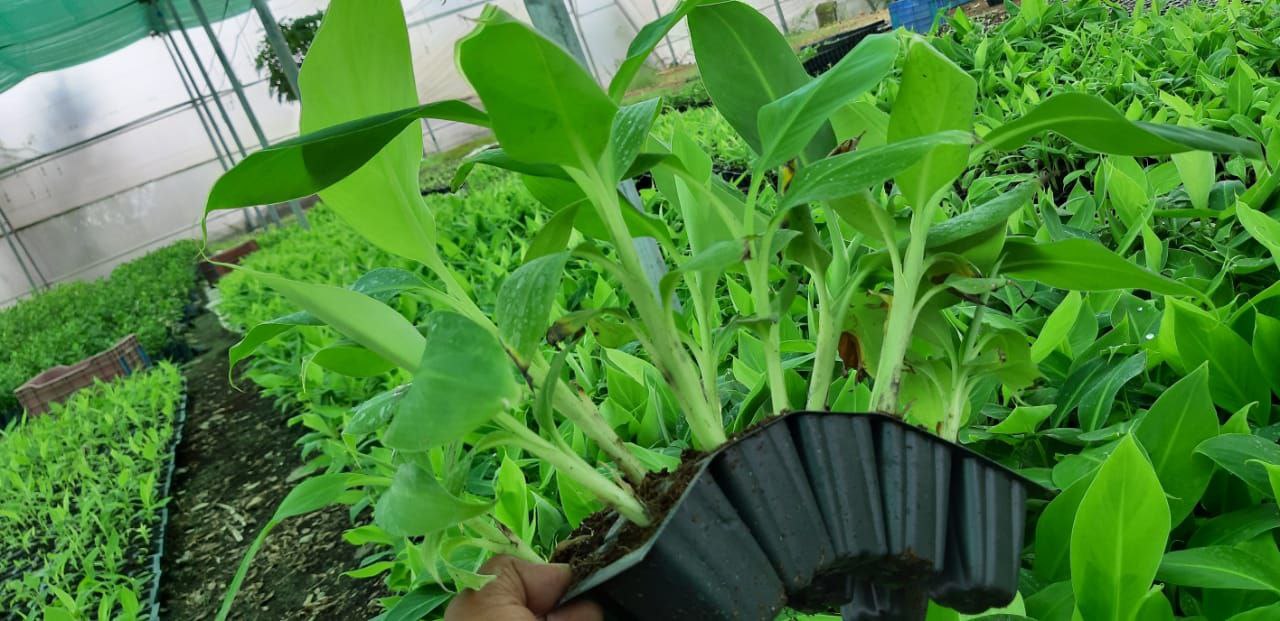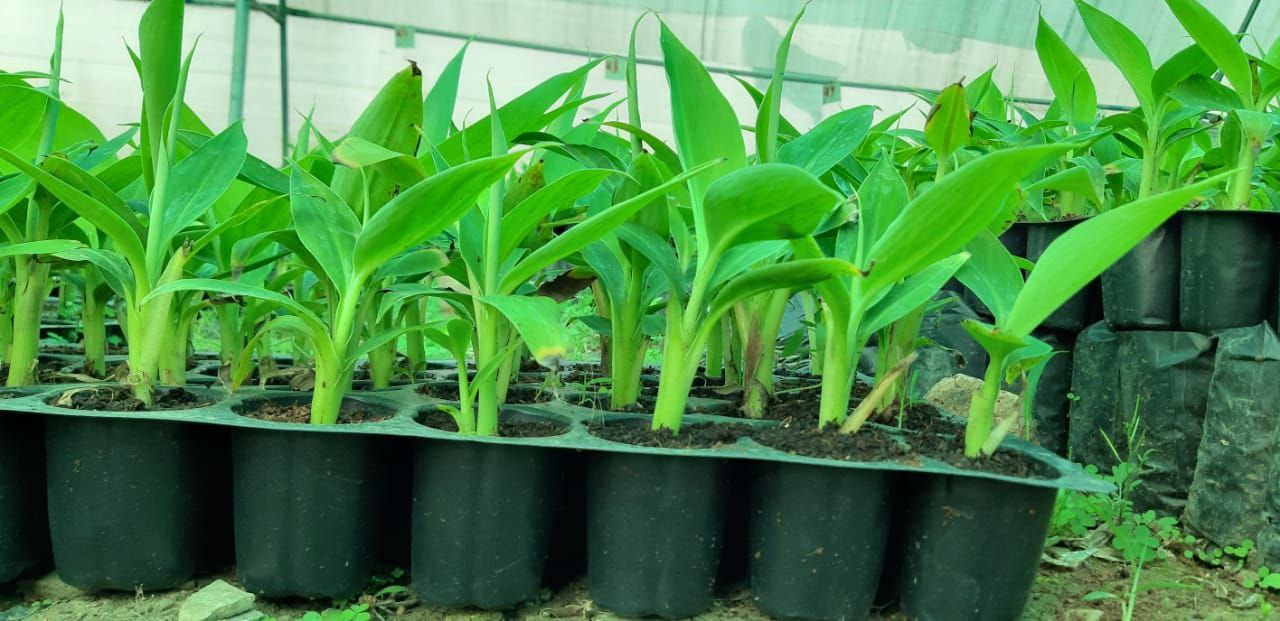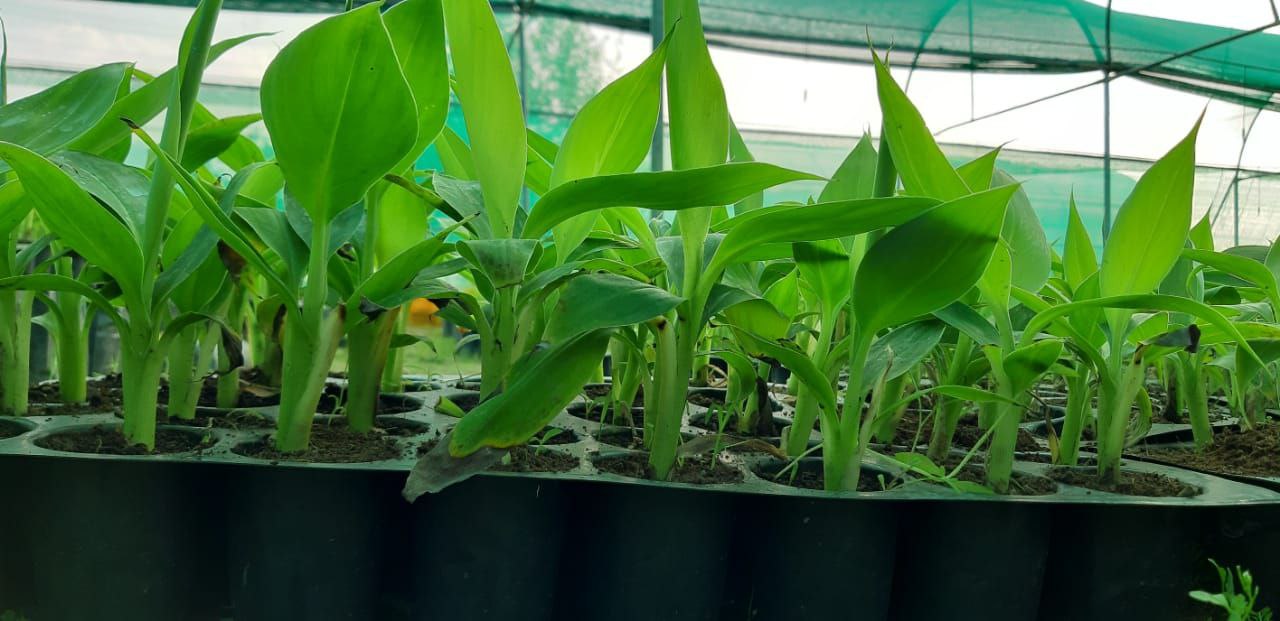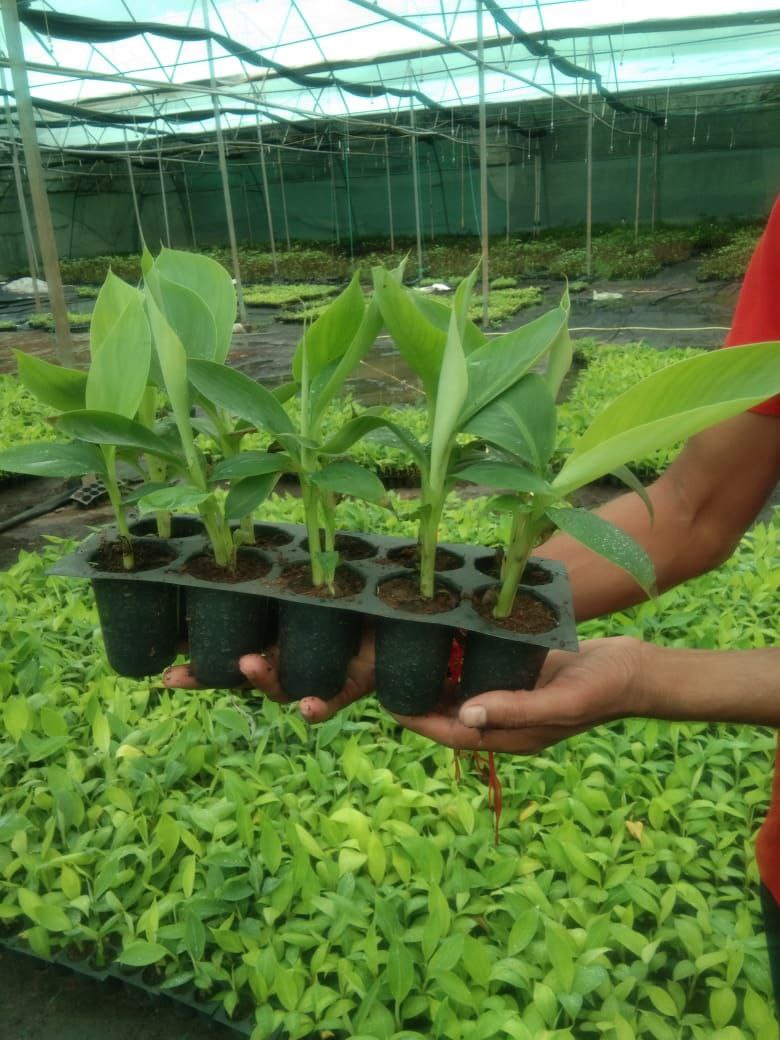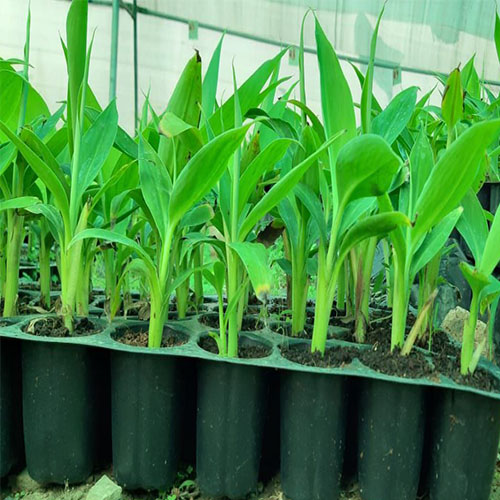Net Pot Plants (102 Cavity ) Tray Vala
Banana plants are large, herbaceous plants that are often mistaken for trees because of their tall stature. Here are some key details about banana plants:
1. Classification and Structure:
- Scientific Name: Most common cultivated banana species belong to the genus Musa. The two main species are Musa acuminata (which gives rise to dessert bananas) and Musa balbisiana (which is often used for cooking bananas or plantains).
- Family: They are part of the Musaceae family.
- Plant Structure: Banana plants are not trees; they are the world’s largest herbaceous flowering plants. What looks like a trunk is actually a “pseudostem” formed by tightly packed leaf bases. This pseudostem can reach heights of up to 30 feet (9 meters).
2. Growth and Reproduction:
- Growth: Banana plants grow from a corm, which is a bulbous root structure. New plants, called “suckers” or “pups,” grow from the base of the parent plant, allowing the plant to reproduce asexually.
- Leaves: The plant produces large, elongated leaves that can be up to 9 feet (2.7 meters) long and 2 feet (0.6 meters) wide. These leaves can tear easily in strong winds.
- Flowering: Banana plants produce a large flower spike called an inflorescence. The flowers develop into clusters of bananas, known as “hands,” which together form the “bunch” of bananas.
- Fruiting: It typically takes about 9 to 12 months for a banana plant to mature and produce fruit. After fruiting, the pseudostem dies, and new growth begins from the corm.
3. Cultivation and Climate:
- Climate: Banana plants thrive in tropical and subtropical climates with temperatures between 77°F and 95°F (25°C to 35°C). They require full sun and well-drained, fertile soil with high organic content.
- Water Needs: They need consistent moisture for optimal growth. However, waterlogging can damage the plant roots.
- Propagation: Commercial banana cultivation typically uses suckers or tissue culture, as seeds are not viable in most cultivated varieties.
4. Uses:
- Fruit: Bananas are primarily grown for their fruit, which can be eaten raw (dessert bananas) or cooked (plantains). Bananas are rich in carbohydrates, especially sugars

